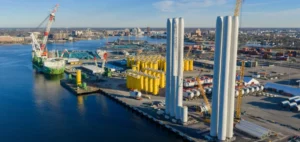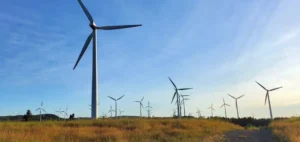The United Kingdom’s energy transition is reaching significant milestones, marked by record wind power production and a remarkable surge in electricity exports. These developments confirm its ambition to become a key player in renewable energy across Europe.
On December 15, 2024, the UK’s wind power generation hit an unprecedented level, peaking at 22 gigawatts (GW) in a single day. This record surpasses historical benchmarks and highlights the nation’s advancements in the wind sector. Installed capacity saw a significant increase in 2023, with an additional 1,386 megawatts (MW), including 833 MW offshore and 553 MW onshore. This brought the total installed capacity to 29,617 MW, reflecting a 4.3% growth.
Ambitious Goals for 2030
As part of its energy strategy, the UK aims for an offshore wind capacity of 50 GW by 2030. Part of this goal relies on the development of floating wind turbines, enabling the exploitation of deep and remote maritime zones. Among the flagship projects is the Dogger Bank wind farm, which will eventually add 3.6 GW of capacity.
However, achieving these ambitions depends on accelerating the construction of wind farms and improving grid connection infrastructure. Administrative procedures and planning authorizations remain key challenges.
Rising Power in the European Market
Electricity exports play a central role in the UK’s energy strategy. In 2024, exports to France reached levels unseen since March 2023, driven by high demand linked to maintenance challenges in France’s aging nuclear fleet. Electrical interconnections, such as the IFA1 and IFA2 subsea links, as well as connections with Norway (North Sea Link) and the Netherlands (BritNed), strengthen the UK’s ability to transport its energy surplus to Europe.
This dynamic allows the UK to stabilize its power grid while generating substantial revenue. It also reinforces its position as a reliable supplier of green electricity, enhancing its geopolitical influence in an increasingly integrated European market.
Technical Challenges and Economic Opportunities
Despite these advances, the country faces major challenges. The intermittency of wind production remains an obstacle, as evidenced by increased reliance on gas-fired power plants during low wind periods, observed in early December 2024.
However, opportunities abound. The growth of renewable energy, combined with the expansion of electrical interconnections, offers the UK a pathway to maximize the economic and political benefits of its energy transition.
In 2024, the UK demonstrated its ability to combine climate leadership with energy security. Its records in wind power production and growing exports affirm its central role in the global energy transition.






















